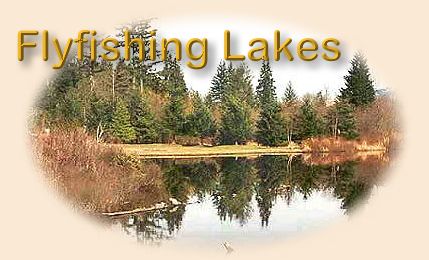|
The leader, which is tied to the end of the fly
line, is usually made of clear monofilament nylon
which is considerably less conspicuous than the
heavier fly line. The leader transfers energy
from the rod and fly line down to the fly and
gives more freedom for the fly to move naturally.
Leader material comes in spools ($2.75 - 2.95) or
different weight with the heaviest (0X) .011 in
diameter and 15 pound test (will not break with
15 pound weight). The lightest (7X) is .004 in
diameter and 1.9 pound test. This monofilament
leader material is used for building new leaders
or replacing used sections of leader.
For lake fishing with sinking fly lines you can
simply use the same weight/test leader material
thorough your leader. This is called a straight
leader and can be attached to the fly line with a
nail knot, braided loop or no-knot eyelet. With
frequent changes of fly, you leader will shorten
and if your leader breaks off in weeds or underwater
obstructions you can replace you loss quite readily
with either the braided loop or no-knot eyelet set up.
Your straight leader will usually be about as long
as your rod. Both the length and weight leader will
depend on the fishing conditions. You want to have
a leader that is strong enough to bring in the size
fish you expect to catch and perhaps weather[ibid]
an encounter with a heavy weed bed, while still
not so heavy to spool the fish.
Pocket Stuffers and Attachments
Since your tube has pockets in the back and at each arm
rest, you don't need the usual fishing vest. You might
want to carry a camera in a sealed plastic bag in the
back pocket where it is least likely to get wet. If
you really want to know how heavy the fish is that you
catch, pack away a small fish scale ($7-30). One side
pocket will be pretty much filled with the reels and
spools of leader material that are needed for exploring
the various depths of the lake and the other might be
devoted to your fly boxes. When selecting fly boxes
($5 - 50) for lake fishing, look for fairly large boxes
that will fit into your zippered pocket and which are
specially designed for nymphs, wet flies and streamers
and that do not rust when they get wet.
Since you will be spending a good amount of time in
your tube, and a fish feeding frenzy might run right
through lunch hour, you might want to have a sealed
plastic bag with some high energy munchies to carry
you over. Although you might be tempted to bring
along a flask of water, this is not such a good idea
since resultant elimination is a problem for tubers
and a trip to the shore when fish are feeding is to be
avoided at all costs. In fact, it is a good practice
to limit your fluid intake in the morning before taking
off for a float tubing trips. Gum and lemon balls in the
stash can ease your thirst.
You tube pockets should be about full now, but you still
have your O-rings on which to attach a few more needed
pieces of equipment. Your large landing net ($20-60) on
an extendable cord should be attached on the side opposite
your reeling hand. In order not to harm fish, the netting
should be of soft natural material. Sometimes you may
want to keep a fish because it is injured, mountable or
even to eat. To keep the fish alive and fresh, you need
to attach it to a string ($3-10) which is also attached
to an O-ring. It is best to place the stringer on the
side opposite the net so that the fish doesn't get
entangled in the net. On your dominant hand side, you
can attach a forceps and line clipper on a cord where
they can be readily available, but tossed out of the
way when you don't need them. Small forceps ($5-6) are
very helpful in removing hooks from big fish jaws. A
final piece of equipment is a thermometer ($5) on an
long (30ft) line to check the temperature at different
levels. This gives you better clues as to when and
where fish might be feeding. By marking the line at
10 foot intervals, you can also use the line as a depth finder. ~ PCP
Continued next time.
Credits: Excerpt from Float Tube
Magic By Patricia C. Potheir, published
by Frank Amato Publications. We appreciate use
permission.
|

